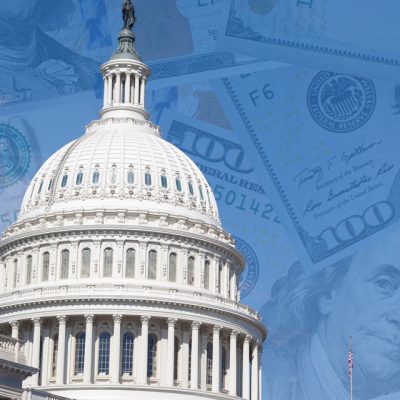Medicare Posts $1.6 Billion Loss
1. Medicare Basics
Medicare managers run two major, separate programs: the federal Hospital Insurance Trust Fund and the federal Supplementary Medicare Insurance Trust Fund. The hospital insurance program is supposed to try to use its trust fund to put cash aside for future expenses. The Supplementary Medical Insurance program is supposed to pay its expenses as it goes along, with current income. Medicare programs are providing health coverage for a total of about 51 million people ages 65 and older and 8.8 million people who are disabled or eligible for kidney dialysis.
2. Medicare Hospital Insurance
The Medicare trustees say the hospital insurance fund is on track to empty out in 2026, already flunks the trustees' short-range financial adequacy test, and has already reached the Medicare funding warning level. "This outlook indicates the need for prompt legislative action to achieve financial adequacy for the HI trust fund throughout the short-range period," the trustees say in their report. In 2027, ongoing hospital insurance program revenue could be enough to pay about 87% of the program's expected benefits and administrative costs, according to the program's trust fund operations tables for calendar yeraw 1970-2028. A year ago, the trustees were saying that ongoing 2027 hospital insurance program revenue could amount to about 90% of 2027 program benefits and administrative costs. Anger between Democrats and Republicans in Washington could change things, but, in the past, the Medicare trust fund "depletion date," or date when stored-up program funds might run dry, has inspired Congress to rush to pass rescue bills. For insurance lobbyists, the major significance of that activity is that a must-pass Medicare rescue bill may serve as a vehicle for pulling other bills through Congress. In theory, for example, a Medicare rescue bill could help lead to the passage of bills changing the health savings account program, or the tax status of stand-alone long-term care insurance. The current standard Medicare hospital insurance payroll tax is 2.9% for employers and employees combined, the trustees say Congress could bring the Medicare hospital insurance trust fund into balance today by increasing the payroll tax for Medicare by an amount equal to 0.82% of taxable payroll, the trustees estimate. If Congress waits until 2026 to make the change, it could bring the program into balance by increasing the payroll tax by an amount equal to 0.94% of taxable payroll, the trustees estimate. For the Medicare hospital insurance program, one bright spot is premium revenue from people who don't have to pay for Medicare but pay premiums voluntarily, to get Medicare coverage. Voluntary Medicare premium revenue increased to $3.61 billion in 2018, from $3.46 billion in 2017.
3. Medicare Part B and Part D Insurance
The Medicare supplementary programs — which cover physician services, outpatient services and prescription drugs — are reporting $16 billion in operating earnings for 2018 on $354 billion in revenue, up from an operating loss of $8.1 billion on $309 billion in revenue for 2017.
4. Social Security Disability Insurance Program
The Social Security Disability Insurance (SSDI) program is reporting a $26 billion gain for 2018 on $172 billion in revenue, up from a $25 billion gain on $171 billion in revenue for 2017. (Related: Social Security Trust Fund Set to Go Bust by 2035) The program is paying benefits to 8.5 million disabled workers, 119,000 spouses of disabled workers, and 1.5 million children of disabled workers. Thanks to a stronger economy, improved SSDI claims experience, and a temporary reallocation of payroll tax revenue, the SSDI program is projected to become insolvent in 2052. A year ago, Social Security actuaries said that program would become insolvent in 2032. Program actuaries believe that, if the program's trust fund empties out, the program will still have enough ongoing revenue to pay about 91% of the expected benefits. A year ago, the actuaries were saying that the program would be able pay 96% of expected SSDI benefits out of ongoing revenue.
5. The United States of America
The United States of America is a conglomerate with large military, industrial and agricultural sectors, and about 327 million residents, in addition to its Medicare and Medicaid health insurance programs and its Social Security income protection program. The United States reported a $1.1 trillion operating loss for 2018 on $3.3 trillion in tax revenue, and $20.5 trillion in gross domestic product (GDP), compared with an operating loss of $779 billion on $3.3 trillion in tax revenue and $19.5 trillion in GDP for 2017. GDP is similar to national income. GDP equals all of a country's income, minus what the country, its businesses and its residents earn on activities outside the country's borders.
6. USA 2093
The new Medicare and Social Security trustees' reports contain projections extending 75 years in the future, and some ideas about what the United States might be like in 2093, and between now and 2093. The Medicare trustees predict, for example, that the United States will generate about $1,389 trillion in GDP, or about $1.4 quadrillion in GDP, over the next 75 years. The 75-year GDP total estimate is about 7% higher than what the trustees were estimating a year ago. The trustees estimate that the current present value of all U.S. GDP till the end of time is about $3.1 quadrillion. The "infinite horizon" GDP estimate is up about 23% from what it was a year ago. The actuaries are predicting that Medicare enrollees will spend a lot more on medicine than they do today: the percentage of GDP going toward Medicare Part D prescription drug plan expenditures could increase to 1.07%, from 0.47% this year. The percentage of GDP going to pay Medicare physician and outpatient services costs could increase to 3.09%, from 1.72%. Medicare hospital insurance spending could increase to 2.31% of GDP, from about 1.54% today.
7. Resources
The Medicare program trustees' reports and related documents are available here. The Social Security program trustees' reports and related documents are available here. — Read United States of America Posts 2017 Earnings, on ThinkAdvisor. — Connect with ThinkAdvisor Life/Health on LinkedIn and Twitter.
© Touchpoint Markets, All Rights Reserved. Request academic re-use from www.copyright.com. All other uses, submit a request to [email protected]. For more inforrmation visit Asset & Logo Licensing.
Featured Resources
View All
Sponsored by Axos Advisor Services
Integrated Banking Solutions: How To Enhance Client Services and Grow Your Business

Sponsored by Optifino
Three Macro Trends Impacting Long-Term Care: Trends, Solutions & Client Conversations

Sponsored by Vanilla
The Missing Piece: Why Advisors Who Skip Estate Planning are Failing Their Clients

Sponsored by Manulife John Hancock Investments
Staying Patient and Positioned for Opportunity in the Bond Market






